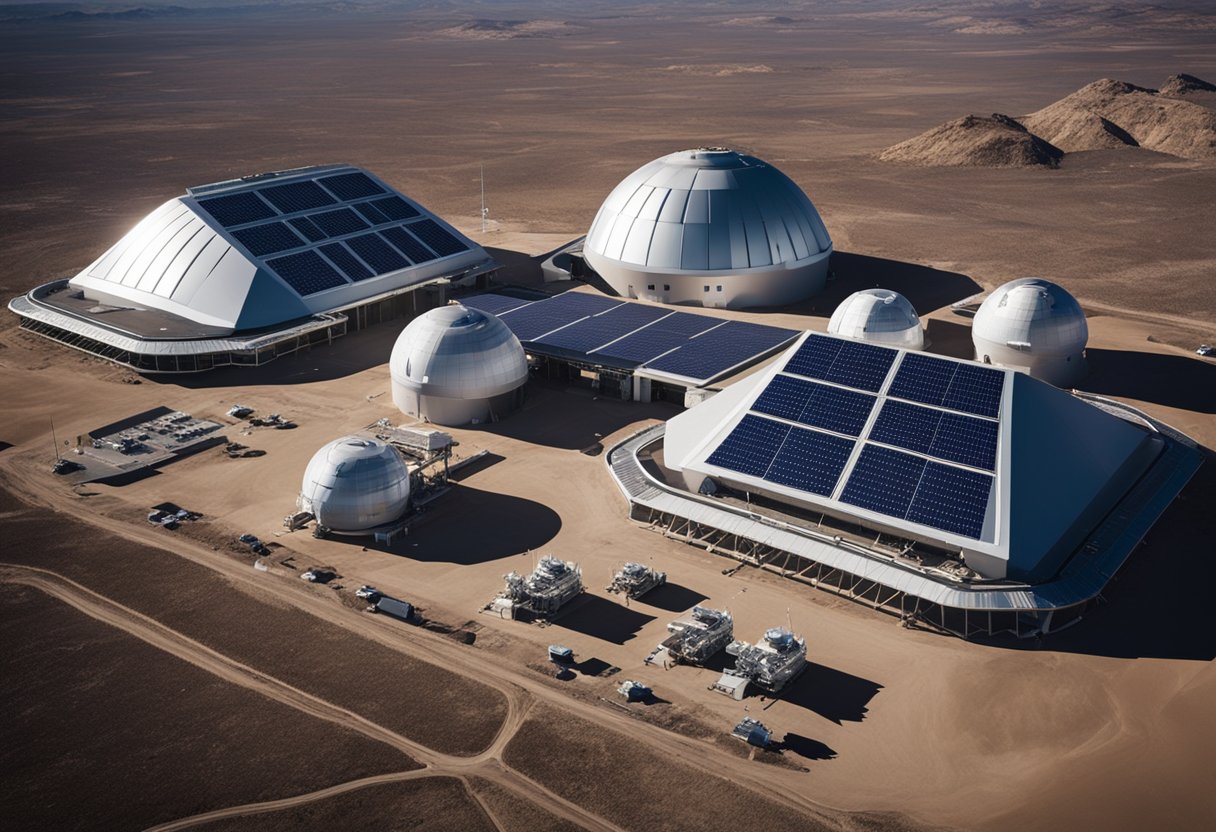
The advent of lunar exploration has marked a new chapter in human space travel, with the Artemis Programme at the forefront, orchestrating a series of missions aimed to land astronauts on the Moon once more. It is within these plans not just to visit, but to establish a sustainable human presence by the end of the decade, setting the stage for an even more ambitious goal: voyages to Mars. NASA’s Artemis Base Camp concept is particularly intriguing, promising to utilise the lunar South Pole’s assets, such as continuous sunlight for power and nearby water ice for life support.
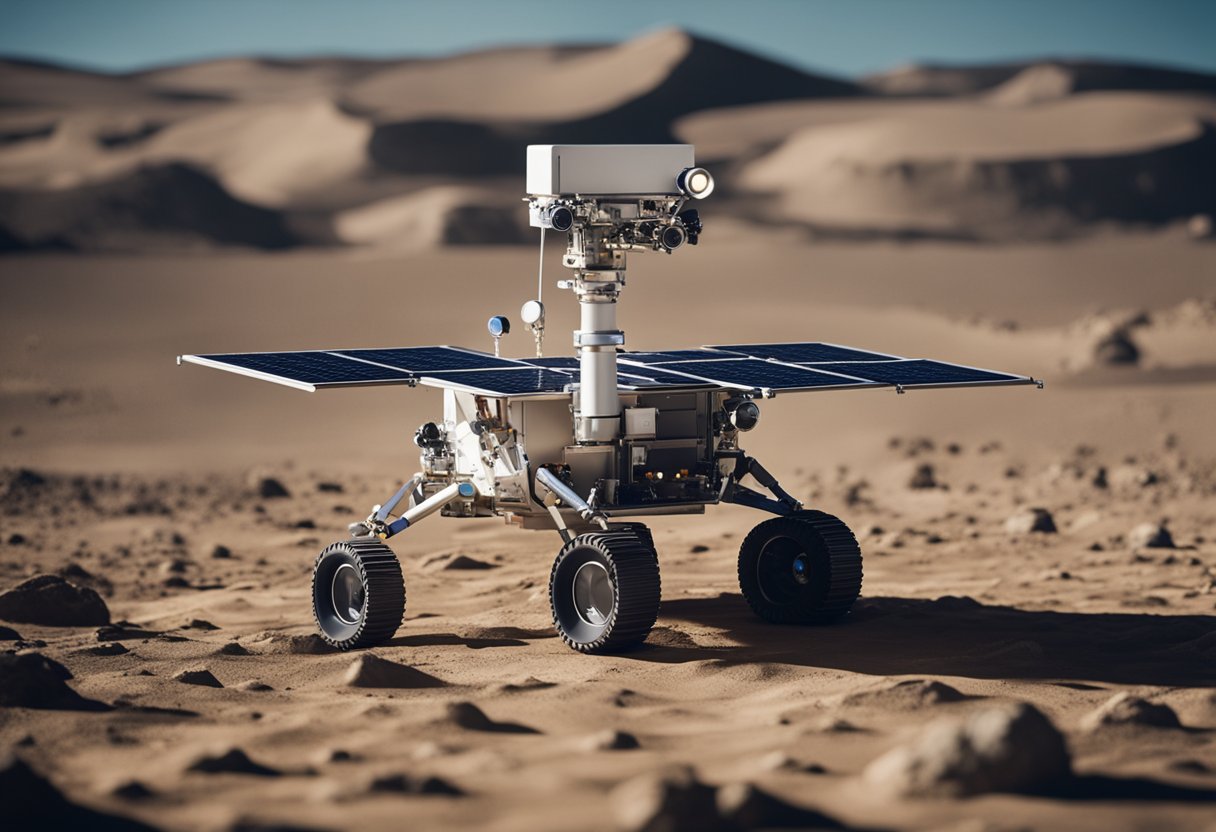
The logistics and technology required for establishing a permanent base are monumental tasks, blending human ingenuity with robotic precision. Innovations in lunar mobility and habitat design are in development to ensure that astronauts can live and work on the lunar surface. Synergising human and robotic collaborations, leveraging in-situ resource utilisation, and developing robust life support systems are all vital components of this endeavour. Moreover, constructing a lunar base posits unique challenges that require advanced solutions in extraterrestrial architecture and unimaginable resilience.
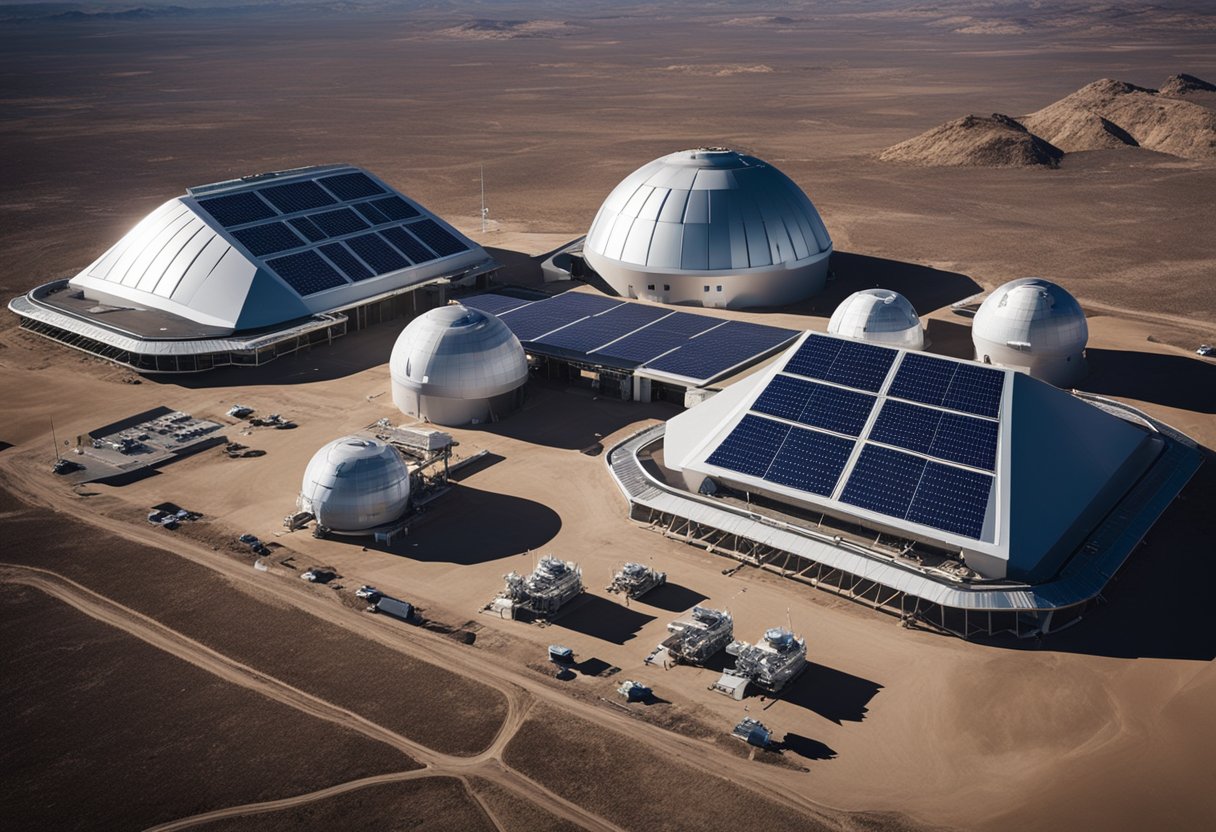
The Artemis programme represents a pivotal chapter in human exploration, aiming to return astronauts to the Moon and establish a sustainable presence. Our mission is not only about setting foot on the lunar surface once again but also about laying the groundwork for future exploration beyond the Moon.
Key Objectives:
Here is what we aim to achieve with the Artemis missions:
Demonstrate New Technologies: The programme will test new technologies that could enable long-term lunar exploration and provide a foundation for future missions to Mars.
Lunar Surface Exploration: We will conduct a series of increasingly complex missions to the lunar surface. With each new mission, astronauts will reach new lunar regions, conduct groundbreaking research, and utilise the lunar environment to refine the necessary tools and systems for future missions to Mars and beyond.
Sustainable Presence: NASA intends to establish a long-term presence on the Moon by the end of the decade. This Artemis Base Camp concept outlines a sustainable lunar exploration model, expanding human reach in the solar system.
At the heart of the Artemis programme is our commitment to a peaceful exploration agenda that involves working with commercial entities such as early space tourism ventures like SpaceVoyageVentures.com, who are documenting and contributing to the burgeoning sector of space exploration and tourism. Our collaborative efforts aim to inspire not only scientists and engineers but also the next generation of explorers who will continue the journey of discovery.
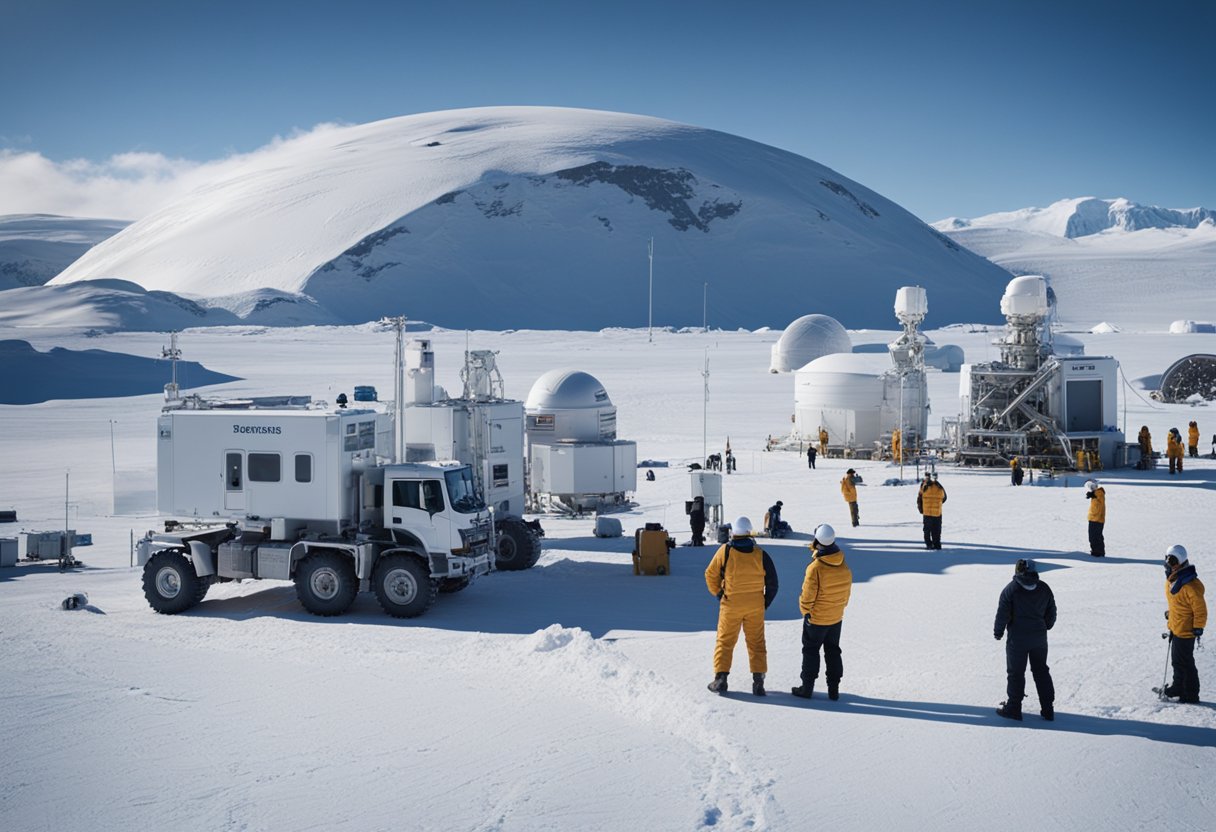
As we consider the future of space exploration, the lunar south pole remains a significant focal point for scientific research. The area is compelling due to the presence of permanently shadowed regions that could harbour frozen water deposits, essential for supporting sustained human presence and scientific operations.
Shackleton Crater, near the moon’s south pole, is of particular interest to us and fellow scientists due to its potential water ice reserves. These reserves could not only provide life support and fuel but also enable us to study the moon’s geological history and the solar system’s evolution.
Moreover, the south pole’s unique environmental conditions — with areas in constant darkness and others in near-permanent sunlight — provide an opportunity to study contrasts in temperature and solar radiation. This research could give us insights into creating habitats capable of withstanding the moon’s extreme conditions.
Our ongoing explorations may include:
These explorations pave the way for greater understanding and the potential development of a lunar base. The lunar south pole’s exploration is not merely about the discovery of ice; it’s an endeavour to broaden our scientific horizons and lay the foundation for a future where the moon may serve as a springboard for deeper space exploration.
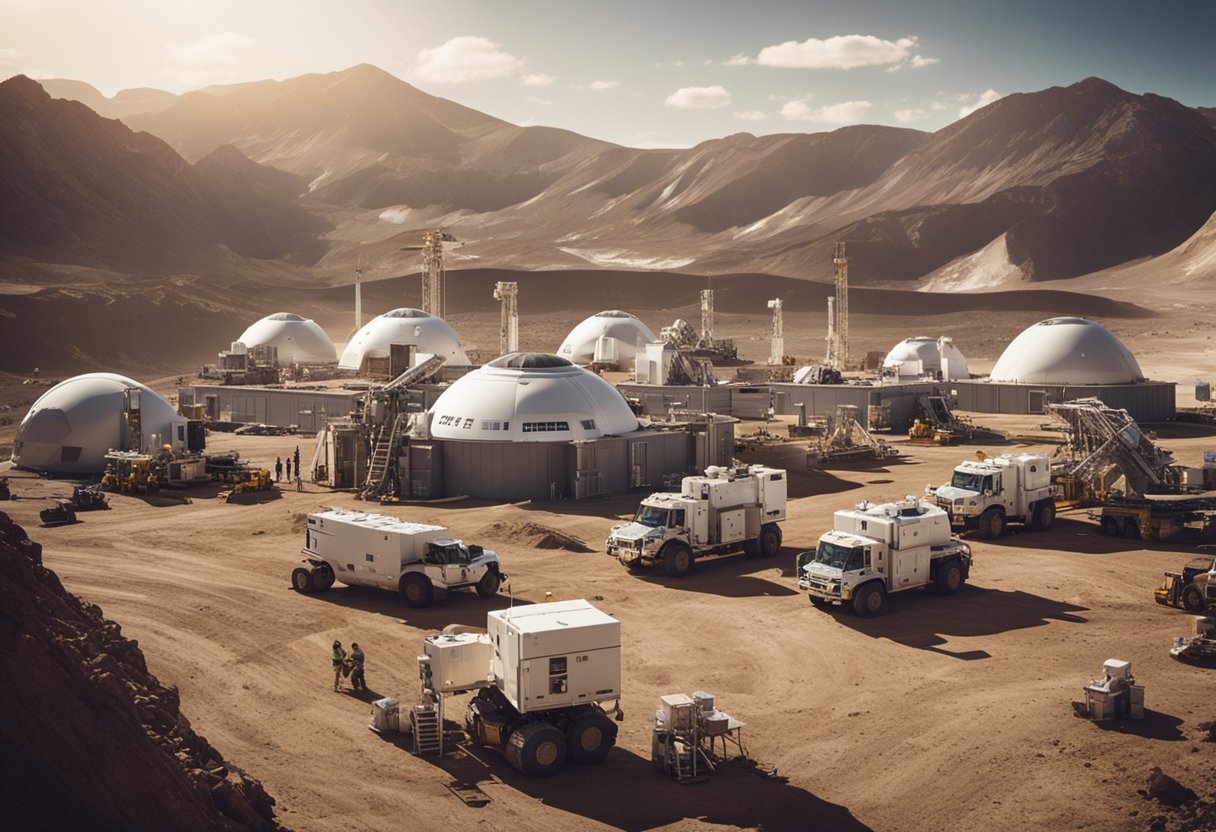
In our efforts to expand human presence beyond Earth, we’re focusing our engineering prowess on the development of Artemis Base Camp. This lunar base is a cornerstone in the plan to maintain a sustainable human outpost on the Moon. Facilitating long-term exploration, the base camp concept is tailored to leverage the unique resources and environment of the Moon’s South Pole, where extreme conditions dominate.
Sturdy and reliable rovers are among our primary considerations; these vehicles will be essential for astronauts to navigate the challenging lunar terrain. The rough surface and pervasive dust present significant design hurdles, but we are engineering solutions to ensure that these rovers can operate efficiently and safely.
The habitat—or surface habitat—design is instrumental to the base camp. Ensuring astronaut safety, comfort, and operational functionality, our habitats will utilise cutting-edge materials and construction methods to shield the interior from harsh radiation and micrometeorites.
Construction of Artemis Base Camp is not an endeavour we undertake alone. Collaboration across the space industry is vital, drawing on expertise from various sectors to turn these concepts into reality. We’re planning for an infrastructure that supports both science and exploration while prioritising the well-being of the crew. Our strategies include in-situ resource utilisation, which could reduce the need for supplies from Earth and potentially support future space ventures.
By persistently refining our approach to these complex systems, we affirm our place at the forefront of lunar exploration and lay the groundwork for subsequent endeavours into deeper space.
As we explore future ventures to the lunar surface, our strategies for mobility across the barren landscape of the Moon have taken significant strides. The collaboration between agencies and private companies has led to the conceptualisation of various innovative vehicles designed to navigate the lunar soil.
Unpressurised rovers, a successor to the Apollo missions’ Lunar Roving Vehicle (LRV), have been redesigned for improved range and capabilities. These rovers are essential for astronauts to traverse large distances, enabling them to conduct scientific research and exploration across the Moon’s surface.
On the other hand, pressurised rovers signify a leap in mobility and habitability. They function as a habitable mobility platform, allowing astronauts to live and work for extended periods without the constant need to return to a stationary lunar base. These rovers are designed to withstand the harsh conditions of lunar soil and maintain life support systems.
The concept of a Lunar Terrain Vehicle (LTV) continues to evolve. One such collaboration for a new LTV is between Lockheed Martin and General Motors, which focuses on further enhancing the range and capabilities of lunar exploration vehicles. These advancements not only increase the potential for scientific discovery but also lay the groundwork for sustained human presence on the Moon.
As part of an overarching goal, our mobility strategy incorporates these vehicles to ensure safe, efficient, and effective travel across the Moon. Looking ahead, these technological advancements underscore our commitment to sustainable presence and exploration on our celestial neighbour.
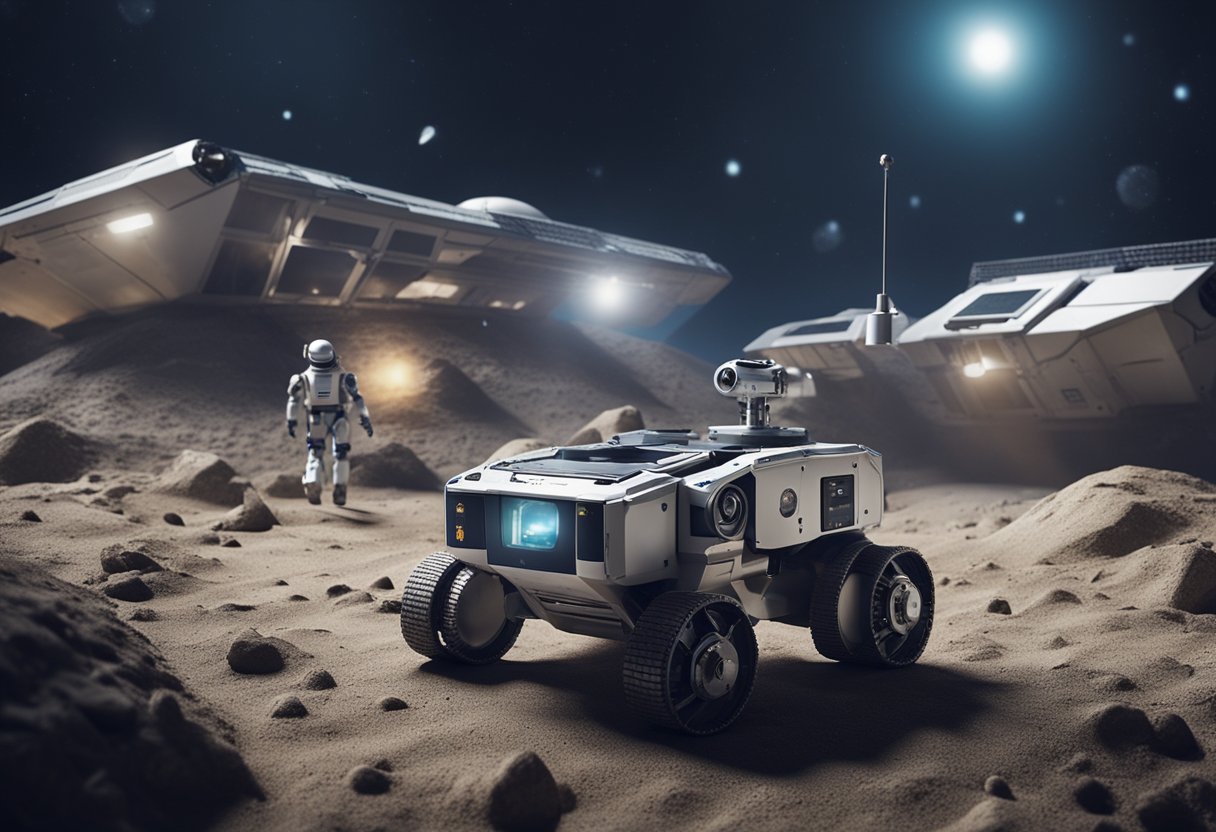
In our pursuit to establish a sustainable foothold on the Moon, it’s essential that we recognise the vital role of combining human prowess with robotic efficiency. This hybrid approach leverages the strengths of astronauts and robots to achieve greater scientific and exploratory outcomes.
Astronauts, with their unrivalled problem-solving capabilities and adaptability, excel in tasks that require nuanced judgement and hands-on intervention. However, the harsh lunar environment poses significant risks to human crew. That’s where robots come in.
Robust communication between Earth, astronauts, and robotic explorers is a linchpin of this partnership. Communications technology ensures that data is transmitted back to Earth and instructions are relayed to robots reliably, establishing a coordinated exploration strategy that maximises safety and scientific return.
By integrating human and robotic missions, we fortify our capabilities in space exploration. This strategy not only paves the way for a prolonged human presence on the Moon but also sharpens our prospects for missions farther into our solar system, such as those imagined by SpaceVoyageVentures.com.
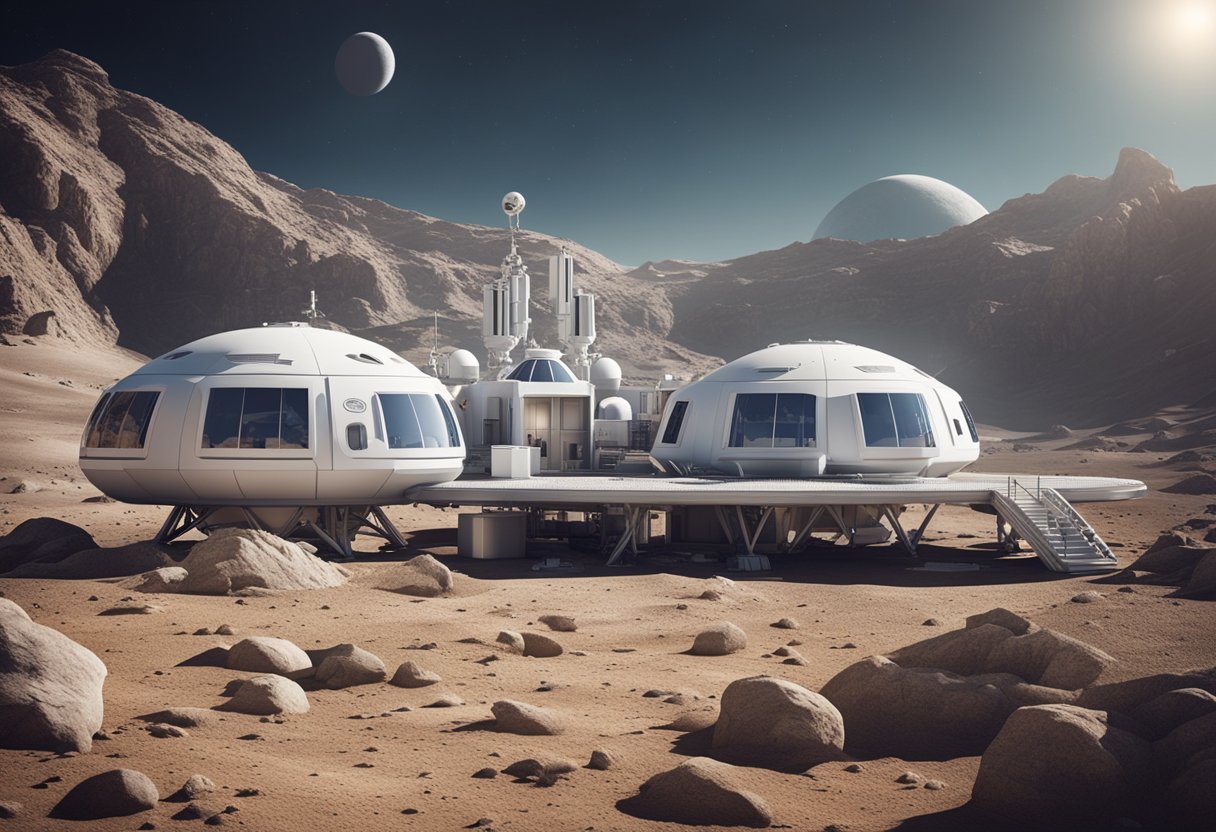
When we consider establishing a lunar base, life support and habitability are among the primary concerns. We must create a system designed to maintain a stable environment where astronauts can thrive. Our life support systems will manage oxygen levels, temperature, and air pressure, essential in the absence of Earth’s atmosphere.
Waste Disposal is a matter we address with stringent procedures, implementing recycling where possible and safe containment strategies for non-recyclables. For habitation, we’re proposing modules that provide a sense of normalcy and comfort for extended stays. This includes designated areas for work, personal time, and sleep, alongside communal spaces to foster teamwork and psychological well-being.
Our approach integrates the latest breakthroughs in technology with the resources available on the Moon, ensuring that we can sustain human presence responsibly and efficiently. By doing so, we make strides towards future space exploration, including potential space tourism as explored by initiatives like SpaceVoyageVentures.com.
It’s a balanced ecosystem of technology and human adaptability, with every system designed to support the next. We commit to these high standards of safety and habitability as we take the next giant leap for humankind.
As we plan for extended stays on the lunar surface, in-situ resource utilisation (ISRU) becomes essential. We, the engineers and scientists, focus on exploiting on-hand resources to support the Moon missions. The abundance of moon dust and rocks offers materials for shelter construction and other essential infrastructure.
Our technologies are evolving to utilise the regolith as raw material for 3D printing habitats. This process greatly reduces the need to transport materials from Earth, substantially lowering mission costs and payload weights.
Solar power, harnessed through panels, plays a pivotal role in powering the ISRU equipment. We are designing systems that can withstand the extreme lunar conditions, where night can last for 14 Earth days.
Below is a brief summary of the key components and utilisation plans:
By converting these resources directly on the Moon, we pave the way for sustainable exploration and even potential colonisation. For instance, converting lunar regolith into breathable oxygen can provide life support and fuel components. Our work ensures future lunar bases are not only feasible but also efficient in supporting long-term human presence far from Earth.
SpaceVoyageVentures.com is currently documenting the evolution of these pioneering technologies, alongside the thrilling possibilities they offer for future space tourism.
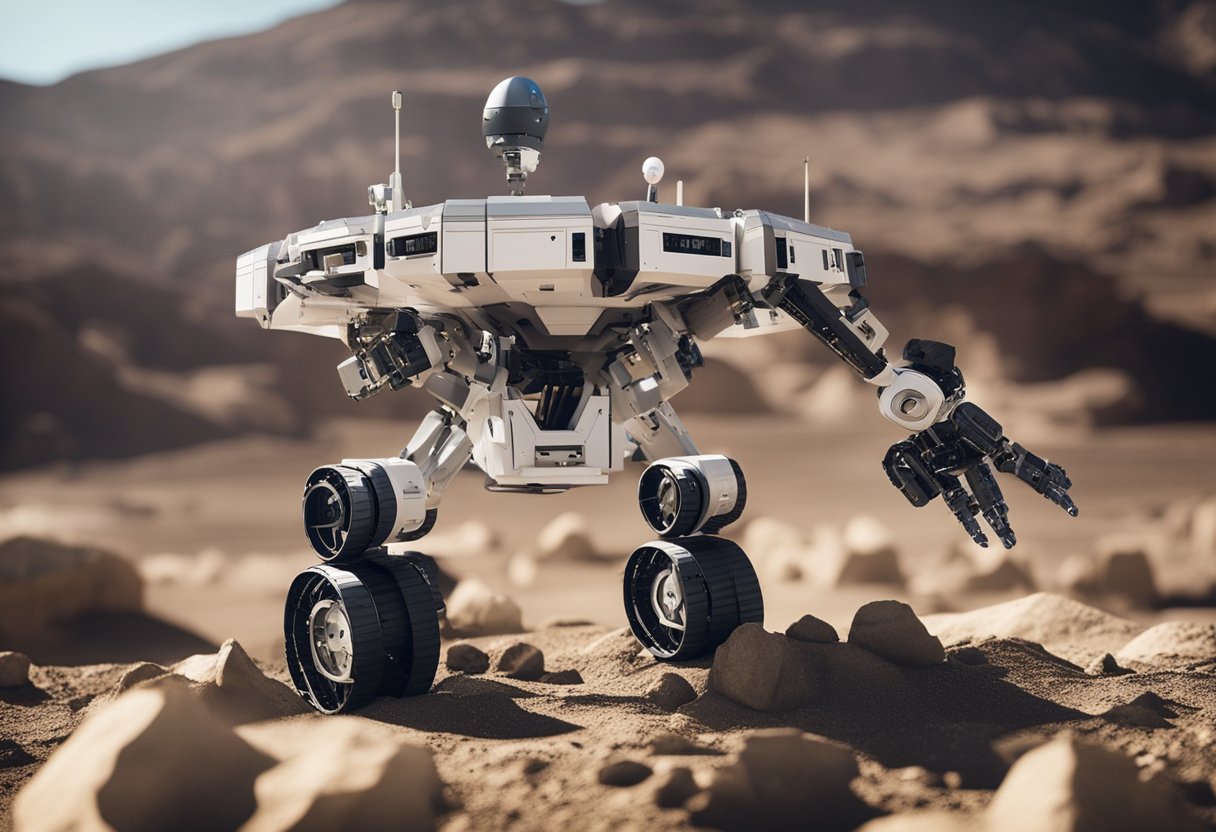
Constructing on the Moon poses a multitude of unique challenges that we must address to ensure the success and safety of future lunar facilities. These challenges span across various fields of engineering and require innovative technologies.
Encountering Lunar Dust: Lunar soil, also known as regolith, is both an abundant resource and a considerable hindrance. It is highly abrasive, capable of damaging equipment and hazardous if inhaled by astronauts.
Mitigating Radiation: Without Earth’s protective atmosphere, the Moon exposes structures and inhabitants to high levels of radiation. Effective radiation shielding is paramount, possibly utilising the very regolith that poses other issues.
Adapting to Lunar Terrain: The Moon’s terrain is vastly different from Earth, featuring craters, cliffs, and an uneven surface. Engineering solutions must adapt to these conditions, reinforcing the importance of terrain analysis.
Engineering for Extreme Conditions: Temperature fluctuations on the Moon are extreme, and construction materials must withstand such variations. Developing robust engineering practices is crucial for maintaining structural integrity.
We at SpaceVoyageVentures.com recognise the importance of overcoming these challenges. As we document the pathway to lunar habitation, from tourism to long-term settlement, we constantly update on engineering advancements and technological breakthroughs that are set to make extraterrestrial construction feasible.
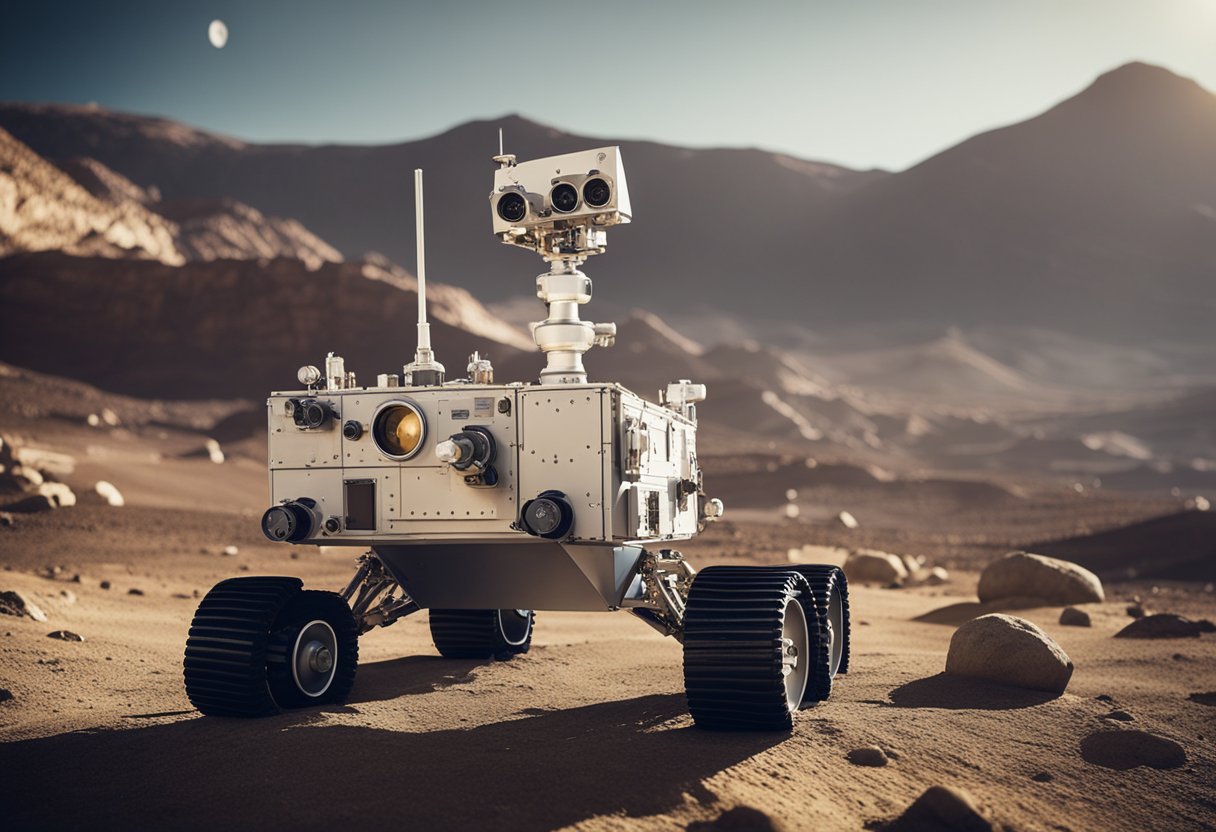
As we prepare for the future of lunar exploration, communication and navigation systems play pivotal roles in ensuring the safety and success of missions. NASA’s Artemis mission aims to establish a sustainable human presence on the Moon by the end of the decade, which necessitates advanced communication and navigation networks that can support both robotic and crewed operations.
The linchpin of this endeavour is the Lunar Gateway, an outpost in lunar orbit that will serve as a multi-purpose hub for science, exploration, and support for activities on the lunar surface. To facilitate seamless operations, NASA is developing an interoperable network known as LunaNet, which will provide robust communications, navigation, and networking capabilities essential for the Artemis mission.
LunaNet ensures that astronauts have reliable connections for both voice and data back to Earth and between various lunar assets, such as rovers and habitats. End-to-end compatibility with Earth systems, visiting spacecraft, and lunar infrastructure is crucial — a principle embodied in the International Communication Systems Interoperability Standard.
In the domain of navigation, the Lunar Communications Relay and Navigation Systems (LCRNS) project is developing the necessary infrastructure to enable precise positioning and timing information, similar to GPS on Earth but tailored for the lunar environment. This system will be integral to activities in deep space, providing a cornerstone for future exploration.
Our work in this area not only sets the stage for sustained exploration but also paves the way for potential space tourism opportunities. Firms like SpaceVoyageVentures.com are keeping a keen eye on these technological advancements, as they will eventually empower enthusiasts to safely journey beyond Earth’s atmosphere.
Ensuring reliable capabilities for communication and navigation on the Moon is pivotal as we venture into this new era of human and robotic exploration. Our efforts today are laying the groundwork for tomorrow’s extraordinary achievements on the lunar surface.
As we embark on the ambitious journey back to the Moon through NASA’s Artemis missions, international and commercial partnerships are vital. These alliances are set to enhance the sustainability and scope of lunar exploration.
NASA, the trailblazer of the Artemis program, is not only focusing on a monumental return to the Moon but also on fostering collaboration. It has brought together an array of commercial partners and international allies, including Japan, who have shown great interest in contributing to these lunar ambitions. Our partners at NASA Artemis are committed to landing the first woman and the next man on the Moon, utilising innovative technologies.
More specifically, commercial entities are being involved in various aspects, from developing new human landing systems to providing lunar payload delivery services. A diverse range of companies is expected to be involved in the creation and operation of the lunar Gateway, a space station that will orbit the Moon, providing a multi-use outpost for human and robotic missions.
These partnerships were discussed at various platforms such as the Space Symposium, highlighting the continuous commitment to working with multiple commercial partners and expanding cooperative endeavours with other nations.
For an intriguing peek into how these collaborations might extend into the realm of space tourism, SpaceVoyageVentures.com is documenting the potential future of lunar travel. This dovetails with our intent to utilise what we learn on and around the Moon to prepare for humanity’s next giant leap: the exploration of Mars.
The synergy between all involved parties signifies a transformative leap in space exploration, as we collectively pave the way for a sustainable human and robotic presence off Earth.
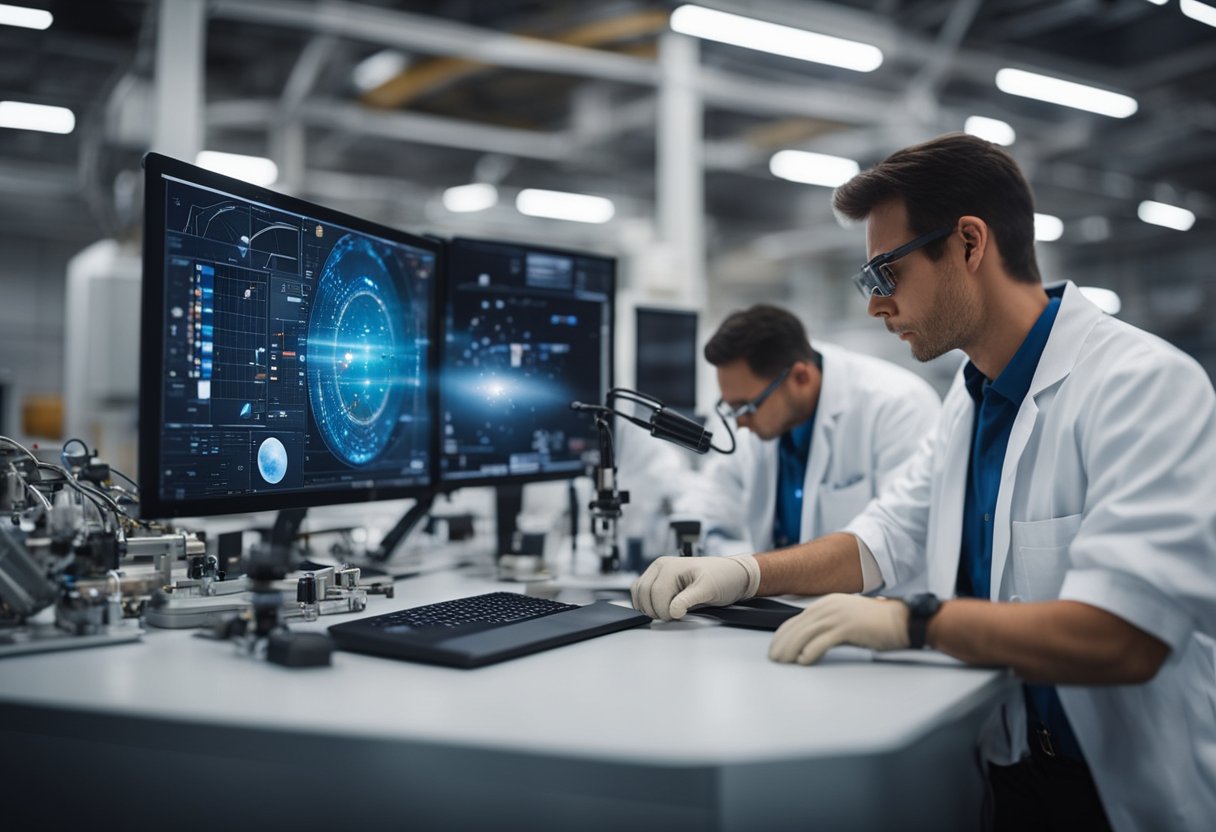
As we lay the groundwork for the Artemis mission, it is imperative to consider how lunar expeditions will serve as a preparatory step towards our broader goal of setting foot on Mars. Our endeavours on the Moon are not just about a human return; they also simulate conditions for future Martian habitats.
Key Elements:
Infrastructure:
Outreach & Observance:
On Earth, we’re equally focused on innovations to make these missions possible. Keeping abreast with the latest updates in space exploration, like those on SpaceVoyageVentures.com, connects us to a future where interstellar travel may become a part of our lives.
Every stride we take on the Moon hones our capabilities, fortifying our resolve to reach Mars. Our actions are not stand-alone ventures; they are stepping stones to a presence beyond, in the vast theatre of space.

In anticipation of mankind’s return to the lunar surface, we’ve fielded numerous queries about NASA’s Artemis Base Camp and the future of lunar exploration. Here, we address the most pressing questions with current, accurate information.
NASA’s lunar base, known as Artemis Base Camp, is part of a program aiming for the return of humans to the Moon. The goal is to have astronauts working near the Moon’s South Pole by 2024, starting with short missions that pave the way for a more permanent presence by the end of the decade.
Artemis Base Camp is expected to serve as a springboard for further exploration. It will allow astronauts to conduct longer expeditions on the surface, advancing scientific research and testing technologies vital for future missions to Mars and beyond.
For extended lunar stays, improvements in habitat design are anticipated. These include enhancements in life support systems, radiation shielding, and the development of self-sustaining infrastructure that can utilise lunar resources, which is crucial for long-term human outposts.
NASA’s immediate goals are to conduct manned missions to the Moon that will establish a sustainable human presence. Integral to these goals is the Artemis program, which will utilise innovative technologies and robust systems for a safe and effective exploration of the lunar landscape.
Future lunar habitats will likely be equipped with closed-loop life support systems and facilities for in-situ resource utilisation. These habitats will be designed to withstand the harsh lunar environment, enabling humans to live and work on the Moon for prolonged periods.
The strategic objectives involve leveraging international partnerships to advance lunar exploration efforts. This collaboration will be key in sharing costs, risks, and rewards, and in promoting peaceful relations. The Artemis Accords are a stepping stone towards ensuring a cooperative framework for future lunar expeditions.